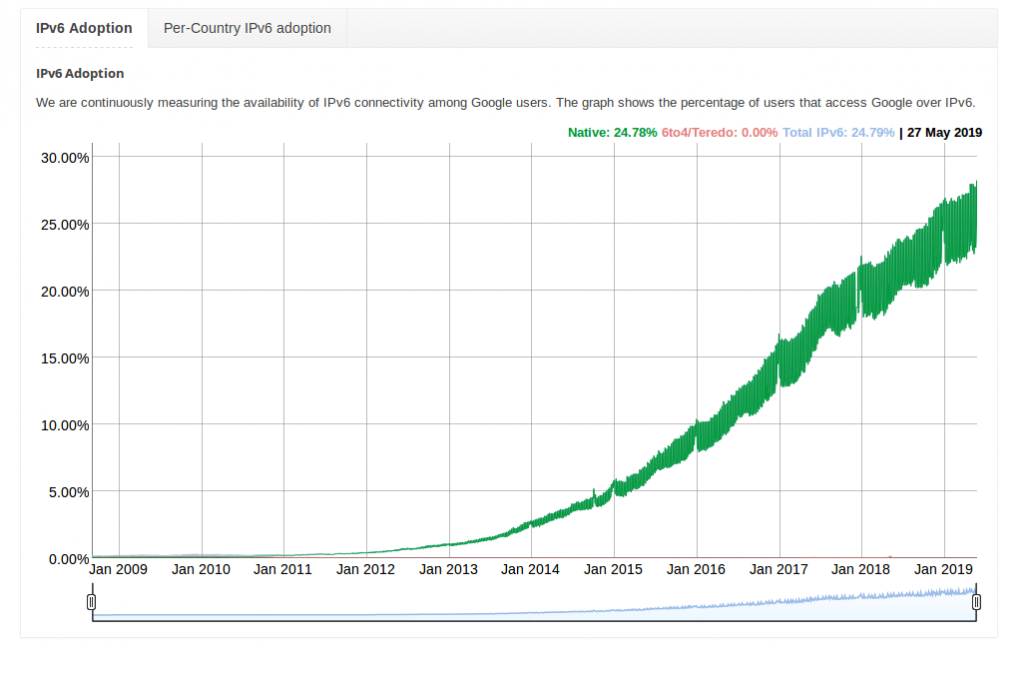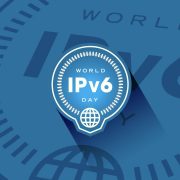Happy World IPv6 Day 2019
Today IPv6 is 7 years old. While IPv6 was drafted in 1998 a global permanent deployment of IPv6 happened on 6 June 2012.
Unlike Google Play or the Raspberry Pi, which were launched in the same year, IPv6 adoption seems to be lagging behind with an increase of misinformation and organisations just ignoring the fact it even exists.
Currently IPv4 and IPv6 coexist in the Internet. Companies such as Sky completed there roll out of IPv6 way back in 2016 so if you still think the ‘internet doesn’t run on ipv6’ then you are very much mistaken.
Google IPv6 adoption graph shows how increasing important having IPv6 is and will be to your business.
What is IPv6?
IPv6 uses a 128-bit address, theoretically allowing 2128, or approximately 3.4×1038 addresses. The actual number is slightly smaller, as multiple ranges are reserved for special use or completely excluded from use. The total number of possible IPv6 addresses is more than 7.9×1028 times as many as IPv4, which uses 32-bit addresses and provides approximately 4.3 billion addresses.
Why do I need to worry about it?
IPv4 has fewer than 4.3 billion addresses available – which may seem a crazy amount but since the internet become more popular back in the 1980’s they knew the addresses would run out! The addition of millions of mobile devices over the last few years have not helped this at all. Sure enough IPv4 is now in the final stages of exhausting its unallocated address space, and yet still carries most Internet traffic.
Are you and your Business ready for IPV6?
Do you have IPv6 on your server? Does your monitoring solution monitor both IPv4 and IPv6?
Dogsbody Technology Server monitoring and management has included monitoring of IPv6 from its launch 6 years ago but we are still amazed at how many companies don’t support IPv6. We still have trouble finding suppliers that fully support it and there is now an ongoing race for people to make an operating system that is IPv6 only from the ground up.
Certainly. We try to set all servers up with IPv6 as standard.
Further reading:
- https://en.wikipedia.org/wiki/IPv6
- https://en.wikipedia.org/wiki/IPv6_deployment
- https://www.google.com/intl/en/ipv6/statistics.html
- https://en.wikipedia.org/wiki/IPv4_address_exhaustion#Exhaustion_dates_and_impact
- https://www.retevia.net/address-pricing-2019-and-beyond/
Feature image by Phil Benchoff licensed CC by 2.0







Leave a Reply
Want to join the discussion?Feel free to contribute!